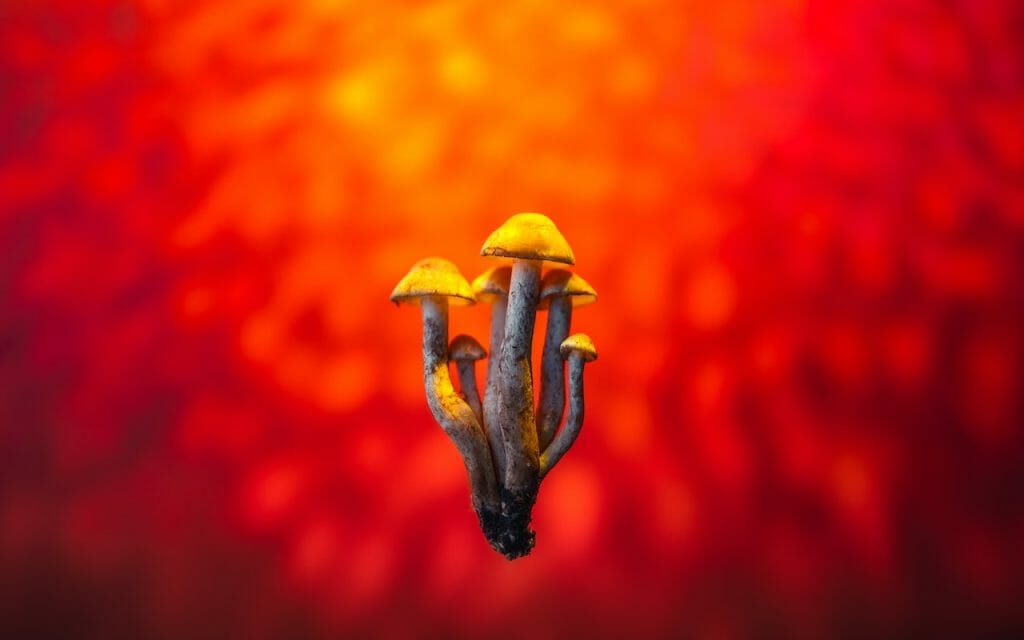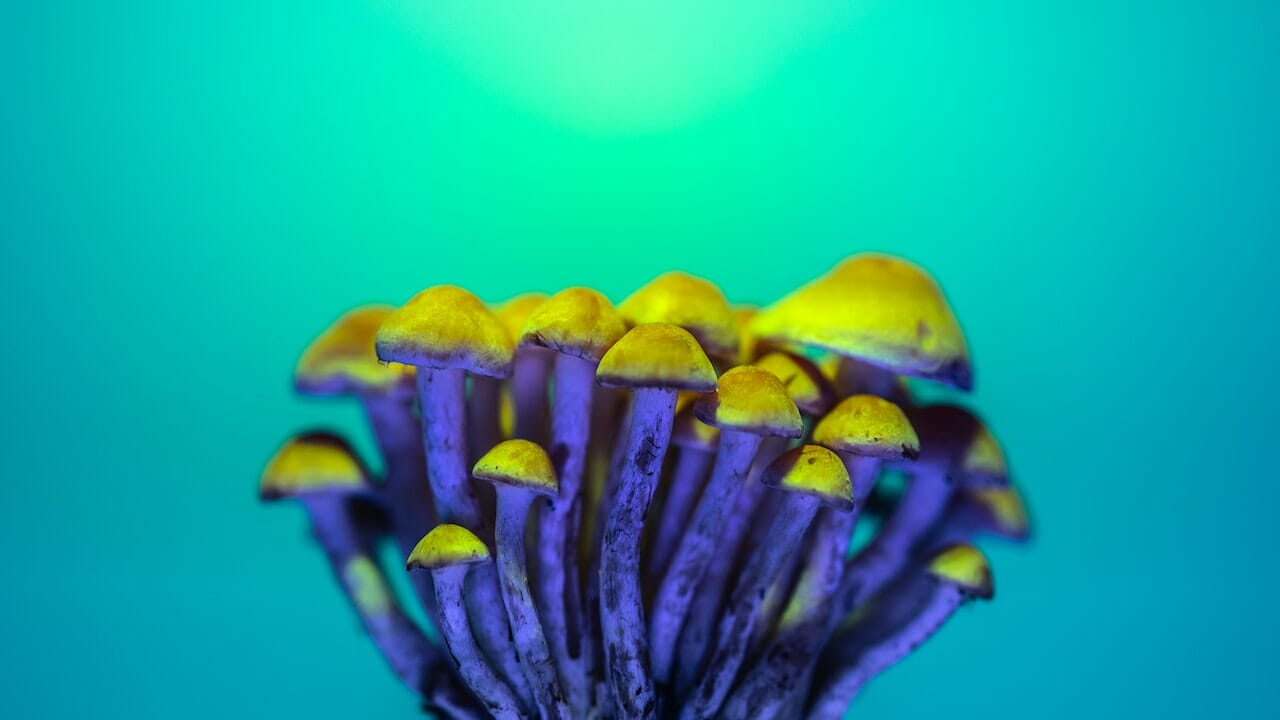LSD (lysergic acid diethylamide) is a highly powerful hallucinogen. It has been thoroughly studied and is one of the most well-researched psychedelic substances. Initially, LSD was primarily for recreational use, but it is now considered a psychoactive compound that may provide mental health advantages. This change in understanding has led to new research opportunities, including the study of LSD in more consumable forms, such as LSD edibles.
Key Takeaways:
- LSD is a powerful hallucinogen that originates from the ergot fungus.
- LSD shares similarities with psilocybin and interacts with the 5-HT2A receptors.
- LSD can induce visual modifications, mood changes, self-perception dissolution, and pseudo-hallucinations.

Getting to Know LSD
LSD is a remarkably powerful hallucinogen capable of drastically transforming an individual’s interpretation of reality and significantly warping their senses. LSD is derived from “ergot,” a type of fungus that grows on rye and other grains.
On a molecular level, LSD is a multifaceted chemical belonging to the ergoline family. It encompasses a bicyclic hexahydroindole group and a bicyclic quinoline group (lysergic acid). The name ‘Lysergic Acid Diethylamide’ originates from the functional group attached to its core. The structure of LSD has similarities with other ergoline alkaloids, such as ergotamine found in the ergot fungus Claviceps purpurea, and the neurotransmitter serotonin.
The Effect of LSD
When consumed, LSD enters the brain and instigates chemical reactions that can persist for several hours. LSD may induce the following short-term effects:
- Unforeseen mood changes
- Distorted perception
- Feeling of dizziness
- Decrease in appetite
- Difficulty in controlling movements
The Advantages What Are the Benefits of Using LSD?
The benefits of LSD are diverse and closely linked to the dose consumed. Most studies highlight the positive effects associated with smaller doses of this psychedelic substance. Here, we discuss the potential benefits of LSD use.
Management of Pain and Boosting Neuronal Growth
Researchers at Maastricht University discovered that a single microdose of LSD can induce pain-relief that lasts for at least five hours or more.
During the Cold Pressor Test, where participants immerse their hands in 3°C (37.4°F) water for as long as they can tolerate, those who consumed 20 mg of LSD managed to keep their hands submerged 20% longer than those who didn’t. They also reported less pain and discomfort.
In addition, LSD can aid in the development and expansion of our brain’s 86 billion neurons. Moderate doses of LSD, ranging from 5 to 20 ug, increase the levels of BDNF in blood plasma. This is noteworthy as it suggests that LSD might alleviate mood disorders like depression, often attributed to problems with neuroplasticity, due to its beneficial effects on neuronal health.
Improving Mental Health
Dr. Robin Carhart-Harris from Imperial College London introduced the entropic brain hypothesis. This concept implies that mental health issues can be linked to rigid thought patterns, sustained by an overactive default mode network (DMN). Substances like LSD, known for their psychedelic properties, can disrupt the DMN, enhance brain entropy, and promote the dismantling of harmful neural pathways while supporting the development of beneficial ones.
A study involving over 1,000 participants who microdosed showed a decrease in depression symptoms. Another large-scale study indicated a decrease in negative emotions and destructive attitudes, complemented by an increase in open-mindedness and cognitive function.
Application in Addiction Therapy
A meta-analysis of randomized-controlled clinical trials using LSD in psychiatry revealed its effectiveness, particularly in treating alcohol dependency. This conclusion is further substantiated by the positive results reported by many patients treated for alcoholism by Humphrey Osmond and at the Spring Grove Hospital Centre during the 1950s and 1960s.
Relief of Anxiety and Depression for Terminal Patients
Dr. Peter Gasser discovered that LSD-assisted psychotherapy could significantly lessen the anxiety of terminally ill cancer patients concerning end-of-life issues. In addition, these patients reported an improved subjective quality of life. Presently, a Phase 2 trial is being conducted to explore the potential benefits of LSD therapy for depression.
Decoding LSD Edibles: Their Composition and How They’re Made
LSD edibles are a type of food and beverage products that incorporate the hallucinogenic compound, LSD. These edibles come in various forms, including chocolates, candies, baked items, and even distinctive products like LSD mints.
The Contents
- LSD: This is the active ingredient that triggers hallucinogenic effects. It is carefully measured and incorporated into the edible.
- Edible Base: The LSD is usually dissolved or infused into a consumable medium like gummies, candies, sugar cubes, or other ingestible items. These mediums act as the carrier for the hallucinogenic compound.
- Flavouring and Ingredients: The specific edible product may contain flavourings, sweeteners, and other ingredients to enhance taste and texture. These elements can include natural or artificial flavourings, colours, and sugars, and can vary significantly.
Manufacturing Process:
- LSD Synthesis: The first step involves the chemical production of LSD. This phase requires a deep understanding of organic chemistry and the necessary chemicals, equipment, and a suitable laboratory environment.
- Liquid Formulation: Once the LSD is synthesized, it is usually transformed into a liquid by dissolving it in a solvent. This liquid acts as a concentrated LSD solution.
- Infusion: The liquid LSD is then infused into an edible medium like gummy candies, sugar cubes, or blotter paper. The infused medium soaks up the liquid, allowing for oral consumption of the LSD.
Experiencing the Psychedelic Impact of Psychoactive Compounds in LSD Edibles
LSD triggers profound visual effects. Colours appear more intense, objects can seem to be encircled by halos or rainbows, and shapes might transform. Regardless of whether the eyes are open or closed, users may see
LSD offers a gateway to a modified perception of oneself and the environment. It can induce diverse psychological states, where thoughts might appear clear and meaningful, or they might lose their logical consistency. Additional effects might involve alterations in the perception of time, distance, and body image. The boundary separating the self and the external world might appear fuzzy. Some users report instances of sensory amalgamation, such as visualising music or hearing colours.
Suggested LSD Products
A wide range of LSD edibles is available on the market, but it’s essential to buy from a trustworthy dispensary. It’s crucial to verify that the edibles contain LSD and not other substances like PCP (embalming fluid), ecstasy, or ketamine.
Deadhead Chemist – LSD Infused Gummies
Deadhead Chemist offers edibles infused with LSD, each containing 100 micrograms (ug) of LSD and available in a variety of flavours. Each package contains a single gummy, which has demonstrated potential for assisting individuals with conditions such as obsessive-compulsive disorder (OCD), post-traumatic stress disorder (PTSD), alcohol addiction, depression, and cluster headaches.
Deadhead Chemist – Mint Tea
Deadhead Chemist’s raspberry mint tea provides a tastier and more enjoyable way to experience LSD effects. LSD and other psychedelics emulate the serotonin neurotransmitter, enhancing the brain’s flow state.
Earthly Delights – Candy Flips
Candy flipping became a trend during the late 1980s rave culture. Presently, thrill-seekers and partygoers continue to enjoy the combined effects of these two potent substances. Users typically experience deep feelings of love and unity, along with captivating visual effects such as enhanced colours, object transformations, and intricate geometric patterns.
Concluding Remarks
LSD has traditionally been linked to transformative experiences. With the advancement of scientific knowledge about the substance, its popularity has soared, leading to the advent of LSD edibles. These delicious concoctions present a fresh pathway for individuals.
Use LSD responsibly and have a pleasurable experience with controlled doses.
As the leading provider in Canada of high-quality online shrooms, Magic Mushrooms Edmonton Canada brings you a vast assortment of LSD-infused edibles and cannabis products. Take your time to browse through our selection, add your favourites to your cart, and unwind at home while we handle the delivery. We also offer an extensive variety of psilocybin mushrooms, edibles, drinks, and capsules for your convenience. Be sure to check out our LSD delivery page for more details!
Frequently Asked Questions
What sets LSD apart from psilocybin?
CHARACTERISTICS LSD PSILOCYBIN Source Semi-synthetic chemical compound Occurs naturally in fungi Possible Forms Tabs, microdots, liquid, gummies, blotter paper Dried mushrooms, capsules, teas, chocolates Potency Highly potent, doses in micrograms (ug) Varies based on mushroom species and method of preparation Onset and Duration Quick onset (15-60 minutes), short duration (3-5 hours) Somewhat slower onset (30-60 minutes), moderate duration (4-6 hours)
How can one avoid negative experiences with LSD?
- Choose Your Surroundings Wisely
- Prepare Your Mental State
- Start with a Small Dose
- Ensure a Supervised Trip
- Create a Peaceful Ambience
- Practice Deep Breathing and Grounding Techniques
- Accept and Release
How long do the effects last?
The impact of the psychedelic will begin to show between 30-60 minutes after ingestion. Individuals with a heightened sensitivity to psychedelics may start to notice the effects
In just 15 minutes, you’ll be able to discern if you’ve taken acid. The pinnacle of your journey will occur around three hours in. During this phase, time might appear to be moving slowly and you might experience hallucinations.
Stay resolute, as it’s not unusual to find yourself feeling detached from reality in this stage. This peak stage can last anywhere from 3 to 5 hours, followed by a deceleration phase spanning another 3 to 5 hours.
How does LSD interact with the human body?
Primarily, LSD interacts with the brain’s serotonin system by attaching to and stimulating the 5-HT2A receptor. This engagement initiates a chain of neurochemical and physiological responses. A range of factors can influence the variable effects of LSD.
Are there other forms of LSD, apart from edibles?
Certainly. LSD is available in a variety of forms. The four main types of LSD products are blotter paper, liquid solutions, tablets/microdots, and gelatin sheets.
Related Articles:
| CHARACTERISTICS | LSD | PSILOCYBIN |
| Source | Semi-synthetic chemical compound | Occurs naturally in fungi |
| Possible Forms | Tabs, microdots, liquid, gummies, blotter paper | Dried mushrooms, capsules, teas, chocolates |
| Potency | Highly potent, doses in micrograms (ug) | Varies based on mushroom species and method of preparation |
| Onset and Duration | Quick onset (15-60 minutes), short duration (3-5 hours) | Somewhat slower onset (30-60 minutes), moderate duration (4-6 hours) |





